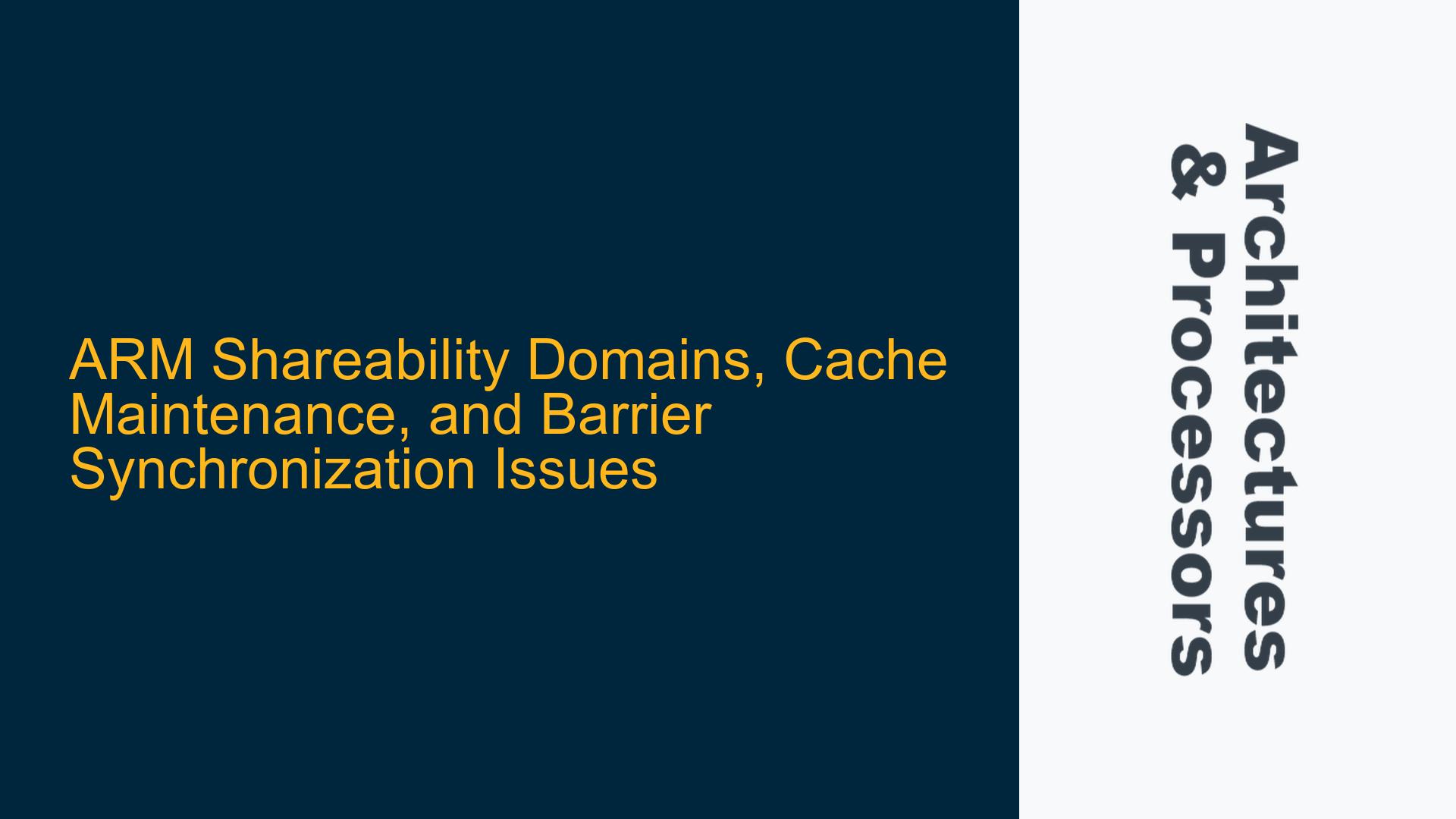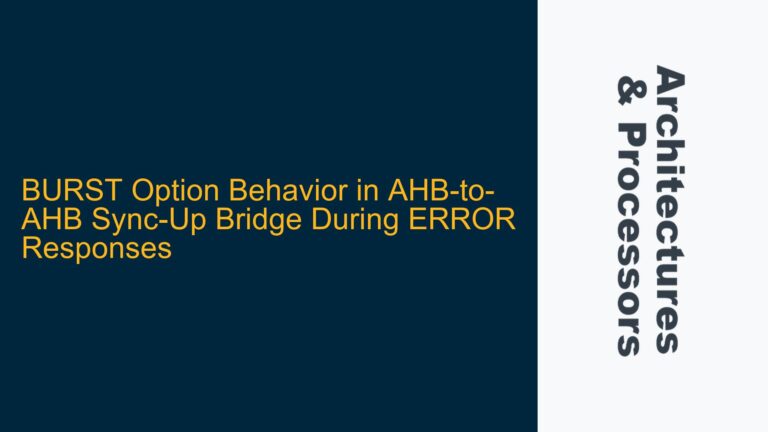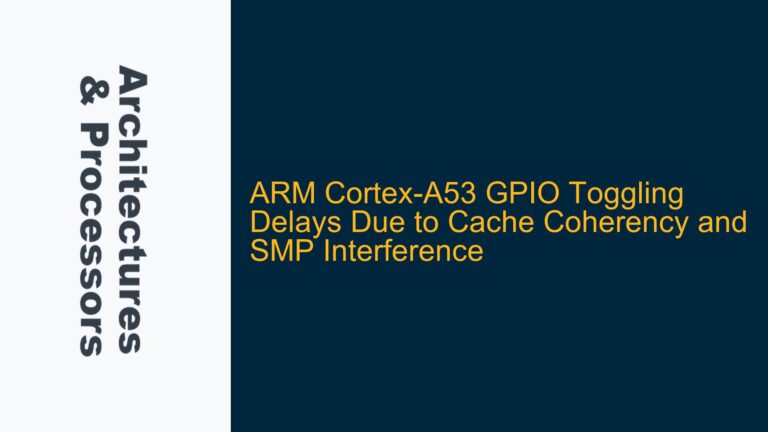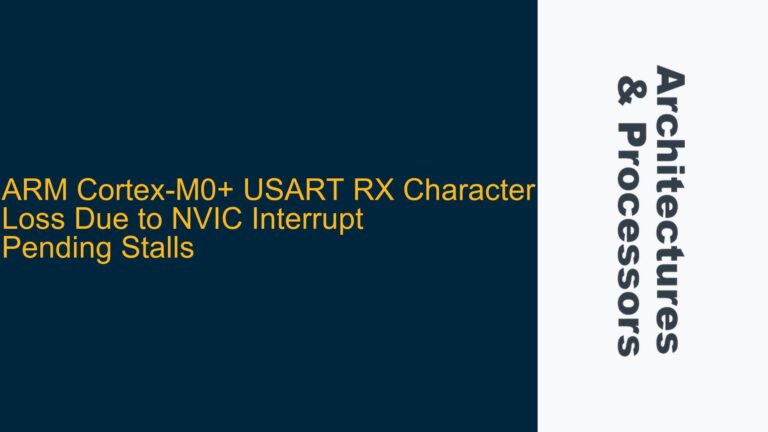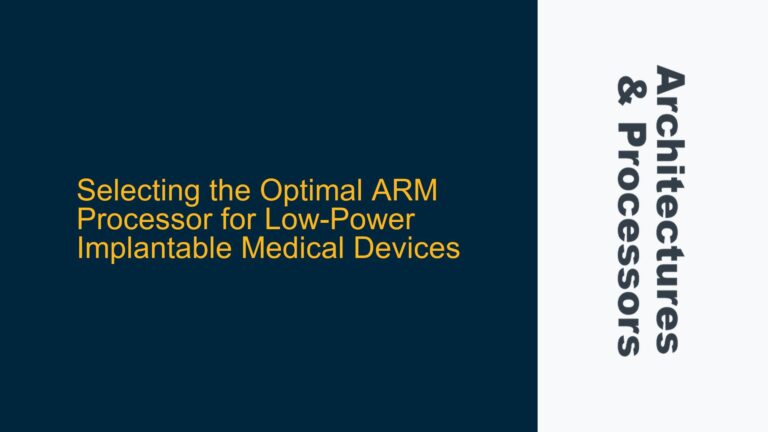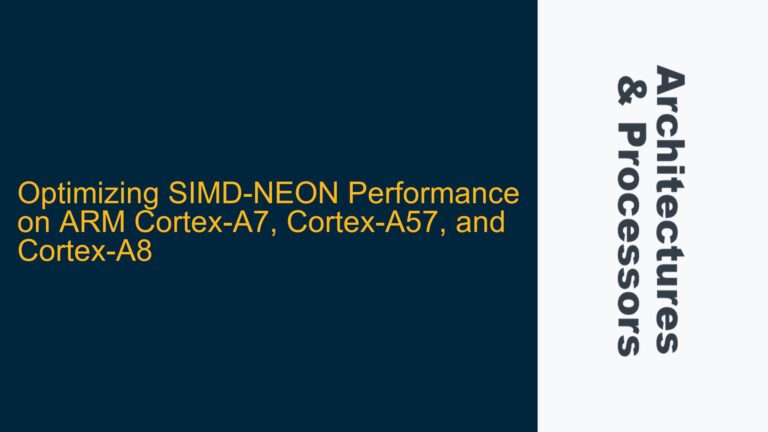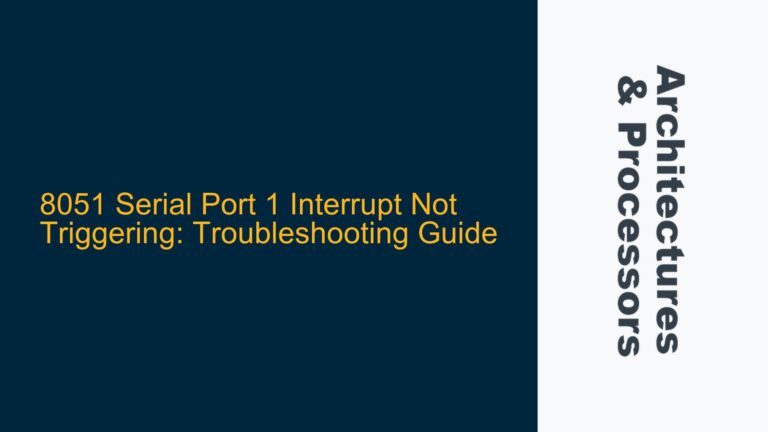ARM Cortex-M4 Cache Coherency Problems During DMA Transfers
When working with ARM architectures, particularly in multi-core or multi-processing environments, understanding the relationship between shareability domains, cache maintenance, and memory barriers is critical. The ARM architecture provides mechanisms to ensure that memory operations are properly synchronized across different processing elements (PEs) within the same or different shareability domains. However, misconfigurations or misunderstandings of these mechanisms can lead to subtle and hard-to-debug issues, especially when dealing with cache coherency and memory barriers.
In the context of the provided discussion, the core issue revolves around ensuring that memory stores to Inner Shareable regions are visible and ordered correctly across PEs in different Inner Shareable domains but within the same Outer Shareable domain. This scenario is particularly relevant in systems where multiple OSes or software components operate in their own Inner Shareable domains but need to share data through a common Outer Shareable memory region.
The problem is exacerbated when cache maintenance operations are not properly synchronized with memory barriers, leading to inconsistent memory views across PEs. This inconsistency can result in data corruption, race conditions, or other undefined behaviors, especially in systems with complex memory hierarchies and multiple cache levels.
Memory Barrier Omission and Cache Invalidation Timing
The primary cause of the issue lies in the incorrect use or omission of memory barriers and cache maintenance instructions. Memory barriers, such as Data Memory Barrier (DMB) and Data Synchronization Barrier (DSB), are used to enforce ordering of memory operations within a specified shareability domain. However, these barriers do not directly manage cache coherency. Cache maintenance operations, such as cache clean or invalidate, are required to ensure that the data in the cache is synchronized with the main memory.
In the provided example, the memory locations X1 and X3 are marked as Inner Shareable, Inner Write-Back Cacheable, and Outer Write-Back Cacheable. The goal is to ensure that stores to these locations are visible and ordered across PEs in different Inner Shareable domains but within the same Outer Shareable domain. The initial approach uses a DMB OSHST barrier, which enforces ordering of stores within the Outer Shareable domain. However, this barrier alone does not ensure that the data in the cache is synchronized with the main memory, leading to potential visibility issues.
The key misunderstanding here is that memory barriers and cache maintenance operations serve different purposes. Memory barriers enforce ordering of memory operations, while cache maintenance operations ensure that the data in the cache is consistent with the main memory. Without proper cache maintenance, the data written to X1 and X3 may remain in the cache and not be visible to other PEs, even if the memory barriers enforce the correct ordering.
Implementing Data Synchronization Barriers and Cache Management
To address the issue, a combination of memory barriers and cache maintenance operations must be used. The following steps outline the correct approach to ensure that stores to X1 and X3 are visible and ordered across PEs in different Inner Shareable domains but within the same Outer Shareable domain:
-
Use Data Synchronization Barrier (DSB) Instead of Data Memory Barrier (DMB): The
DSBinstruction ensures that all memory accesses before the barrier are completed before any memory accesses after the barrier are executed. This is more stringent thanDMB, which only enforces ordering but does not wait for completion. In the context of the example, replacingDMB OSHSTwithDSB OSHSTensures that the stores toX1andX3are completed before proceeding. -
Perform Cache Clean Operations: After each store operation, a cache clean operation should be performed to ensure that the data in the cache is written back to the main memory. The cache clean operation should be performed up to the Point of Coherency (PoC) or Point of Unification (PoU), depending on the system’s memory hierarchy. In the example, a
DC cleaninstruction should be used after each store toX1andX3. -
Broadcast Cache Maintenance Operations: In systems with multiple cache levels or multiple PEs, cache maintenance operations should be broadcast to ensure that all relevant caches are synchronized. This is particularly important in Outer Shareable domains where multiple PEs may have their own caches. The
DC cleaninstruction should be configured to broadcast the cache maintenance operation to all relevant PEs. -
Ensure Correct Shareability Domain Configuration: The memory regions
X1andX3should be marked as Outer Shareable if the goal is to ensure visibility across different Inner Shareable domains. This configuration ensures that the memory barriers and cache maintenance operations are applied correctly across the desired shareability domain.
The corrected code would look like this:
STR #1, [X1]
DC clean for [X1] up to PoC or PoU with broadcast
DSB OSHST
STR #1, [X3]
DC clean for [X3] up to PoC or PoU with broadcast
This sequence ensures that the stores to X1 and X3 are completed and visible to all PEs in the Outer Shareable domain. The DSB OSHST barrier ensures that the cache maintenance operations are completed before proceeding, and the DC clean instructions ensure that the data in the cache is synchronized with the main memory.
In summary, the key to resolving the issue lies in understanding the distinct roles of memory barriers and cache maintenance operations. Memory barriers enforce ordering, while cache maintenance operations ensure visibility. By combining these mechanisms correctly, it is possible to achieve the desired synchronization across different shareability domains in ARM architectures.
Additional Considerations and Best Practices
While the above steps address the immediate issue, there are additional considerations and best practices that should be followed to ensure robust and reliable system behavior:
-
Understand the Memory Hierarchy: Different ARM systems may have different memory hierarchies, including multiple levels of cache and different types of memory (e.g., DRAM, SRAM). Understanding the specific memory hierarchy of the target system is crucial for correctly configuring cache maintenance operations and memory barriers.
-
Use the Correct Barrier Type: ARM provides different types of memory barriers (e.g.,
DMB,DSB,ISB), each with different semantics. It is important to use the correct barrier type for the specific use case. For example,DSBshould be used when waiting for memory operations to complete, whileDMBis sufficient for enforcing ordering. -
Consider System-Level Coherency: In systems with multiple PEs and complex memory hierarchies, system-level coherency mechanisms (e.g., snooping, directory-based coherency) may be in place. These mechanisms can affect the behavior of cache maintenance operations and memory barriers. It is important to understand and account for these mechanisms when designing the system.
-
Test and Validate: Given the complexity of memory systems and the potential for subtle issues, it is important to thoroughly test and validate the system behavior. This includes testing with different configurations, stress testing, and using tools such as ARM’s CoreSight or other debugging tools to monitor and analyze system behavior.
-
Document and Communicate: Proper documentation and communication of the memory and cache configuration, as well as the synchronization mechanisms used, are crucial for maintaining and debugging the system. This is especially important in multi-developer or multi-team environments where different components may interact with the memory system in different ways.
By following these best practices and understanding the underlying principles of ARM’s shareability domains, cache maintenance, and memory barriers, developers can ensure that their systems are robust, reliable, and performant.
